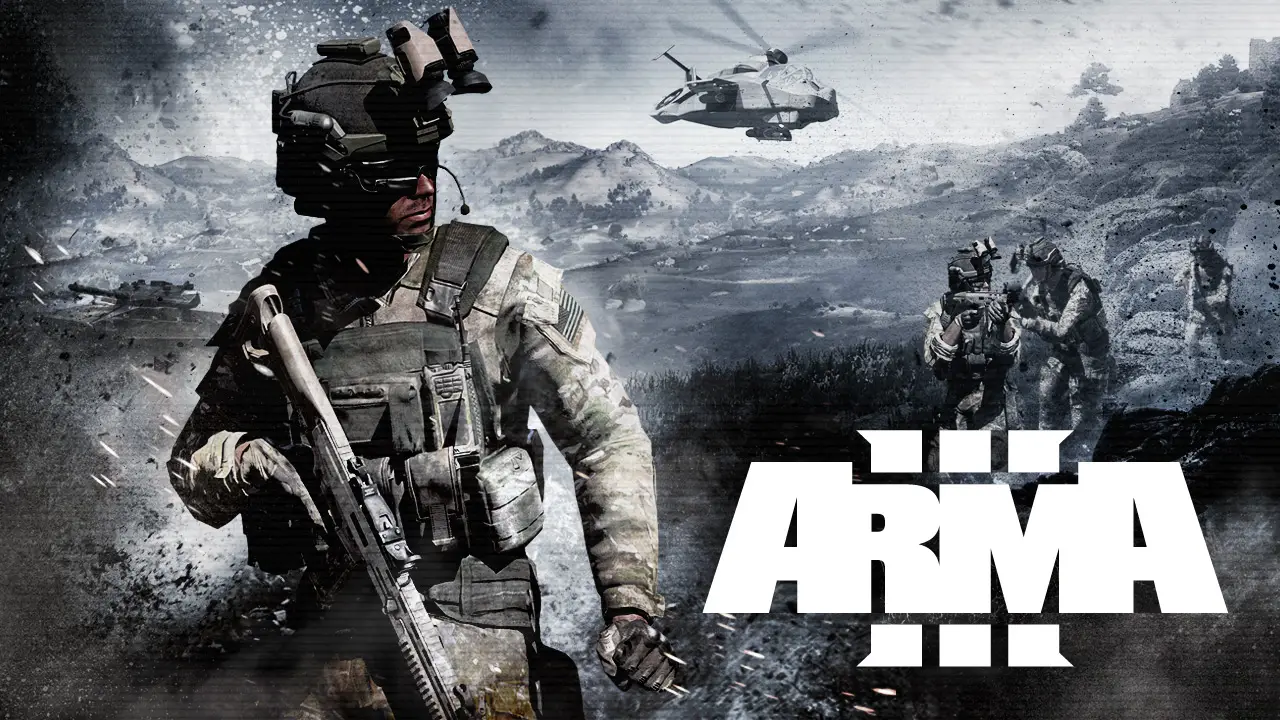This guide contains all important information, to help you on the road to becoming a successful member of the Public Zeus Milsim; It is here to help you throughout the training, and as a quick reference guide throughout your time in the Milsim.
Basic Formations
Basics of Section Formations
The Section IC should decide what formation the section will travel in depending upon:
- Ground.
- Visibility.
- Direction from which enemy fire is expected.
- The need for control by the section commander.
- The need for producing the maximum fire with the minimum delay.
Order Of March
A section consists of eight men, led by a section Commander (IC) and assisted by a second in command (2IC).
- Having the IC near the front ensures that the IC is always able to effectively lead the section, whilst also protecting him from engagement. Additionally having the 2IC spaced apart from the IC ensures that you will always have someone ready to take command.
(VV = IC, V = 2IC)

Fire Teams
The section can further divide into fire teams called Charlie and Delta. This normally takes place in order to achieve section-level objectives at a local level, with one team providing protection for the other.
- Fireteams do not always have to be evenly split into 4:4. A more realistic breakdown or grouping would be 3:5, with three people including the section IC in an assault team, and the remaining five providing fire support to protect the assault team while they move.

Extended Line
An extended line is used on occasions as an “Assault Formation”. Each man MUST be slightly staggered:
- إيجابيات: Maximum Firepower Available.
- سلبيات: Difficult to Control.

Arrowhead
Arrowhead is probably the best for moving on a broad front in open country. If only one LSW, it is positioned on the flank most likely to be attacked:
- إيجابيات: Easy to Control, Very Good All Round Observation and Protection.
- سلبيات: If too Concentrated, it can Present a Vulnerable Target.
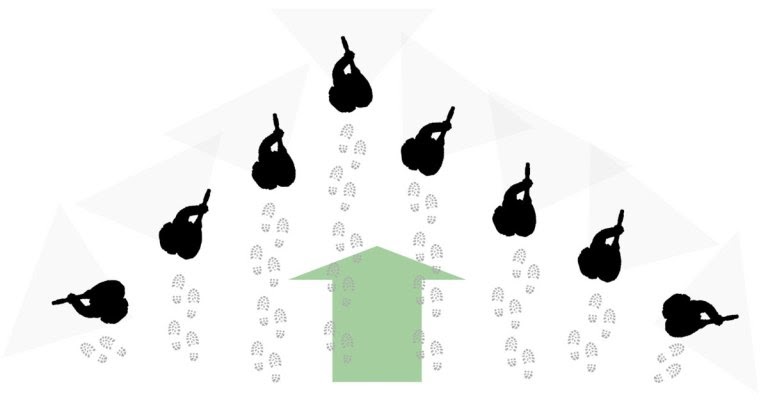
ملف
It may be used when a path or track is wide enough to permit alternate men to move on opposite sides of the track, or either side of a small bank or hedgerow:
- إيجابيات: Easy to control, Useful formation at night.
- سلبيات: Presents a concentrated target
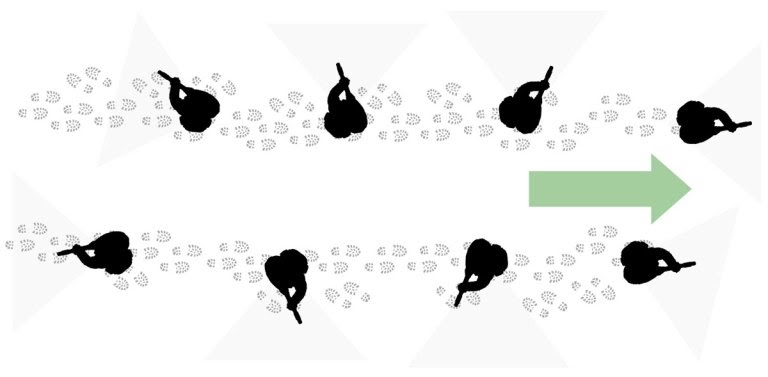
Single File
Single file is useful for following linear features such as hedges, ditches, walls, and narrow tracks. Each man must follow in the path of the leading man:
- إيجابيات: Least vulnerable to fire from a flank, Useful for moving along linear features such as hedges or ditches which give cover, Good for control on a very dark night.
- سلبيات: Bad for fire production to the front, Vulnerable to frontal fire, Bad for observation to the flanks as men tend to allow their eyes to rest on the person in front of them, Passage of commands and information is slow.

Convoy Tactics
Forming a Convoy
هناك 2 main convoy formations:
- Column formation (Each vehicle behind one another).
- Staggered formation (Each vehicle alternates which side of the road they are on).
Once in position, the convoy leader will radio the formation, speed, and distance .i.e. “Column formation, سرعة 40, Distance 50”.
Halting a Convoy
- When you hear “convoy halt” the first and the last vehicle in the convoy will close the road.
- Other vehicles will position themselves in a staggered formation on the outside of the road.
- This formation achieves all-around defense with the vehicles.
IC’s will then inform their sections if they need to dismount, there are two methods of dismount:
- Soft dismount: Everyone except the driver and gunner will dismount.
- Hard dismount: Every person in the vehicle dismounts.

Ambushing
Basics of an Ambush
A Destruction Ambush – This is executed by waiting for the target to move into a “kill zone”, then the ambushing party prevents anyone from leaving and eliminates them. Traps can be placed in between the attackers and the targets to prevent a counter-attack, لكن, attackers will often leave a route through these, enabling them to close the gap if needed. Traps can also be placed at any cover/buildings near the kill zone, thus destroying any target that tries to use them.
Reacting to an Ambush
If possible the first action should always be to get out of the kill zone, لكن, if not then the steps below should be followed:
Near Ambush:
- Soldiers in the kill zone immediately return fire, take up covered positions, and throw fragmentation grenades or concussion and smoke grenades. Immediately after the grenades detonate, soldiers in the kill zone assault through the ambush using fire and movement.
- Soldiers not in the kill zone locate and suppress the enemy, take up covered positions and shift fire as the assault begins.
Far Ambush:
- Soldiers in the kill zone immediately return fire and take up covered positions. The leader identifies the enemy’s location and soldiers suppress the enemy’s position.
- Soldiers not in the kill zone move to eliminate the enemy, this either forces the enemy to withdraw or at least destroys the ambush.
- Whilst the hostiles are distracted, the unit moves out of the kill zone.
Principles of Ambushing
- Good Intelligence – Ambushes should only be set when there is a good chance of contact with the enemy based on good intelligence.
- Thorough Planning and Preparation – Reconnaissance must be carefully planned and thorough. All the main actions of an ambush must be well-rehearsed.
- Security – Thoughtless reconnaissance will betray the position of the ambush. The ambush site must be chosen to minimize the chance of being surprised; those carrying out the ambush must themselves be able to meet an enemy attack if necessary.
- Concealment – Avoid leaving signs within the ambush area. Excellent camouflage is required both day and night.
- Good Control -All members of the ambush must know the plan in detail, all signals, together with the plan for springing the ambush, must be kept simple, and be thoroughly rehearsed.
- Discipline – The ambush will only be successful if all members are alert, make no noise, and restrict all movement. Reaction to signals must be fast and weapons made ready to fire at a moment’s notice.
Considering an Ambush site
- Known enemy routes.
- Places to conceal the ambushing force.
- The targets’ withdrawal routes.
- Our withdrawal routes.
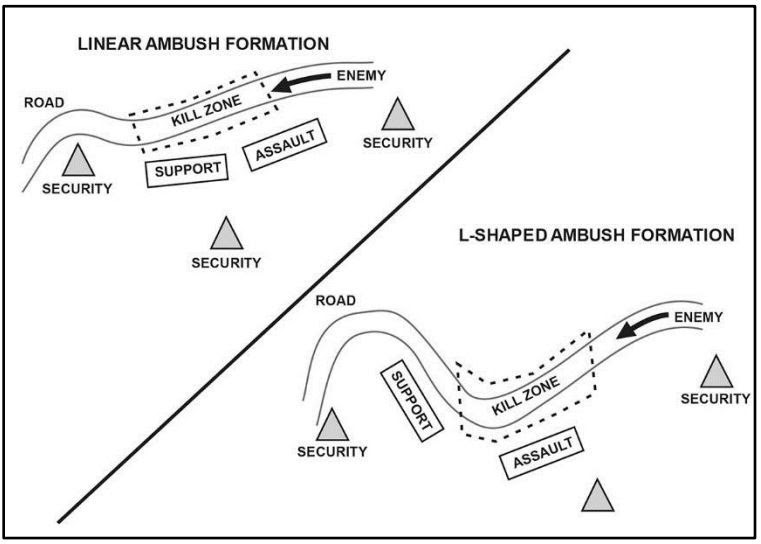
Cam and Concealment
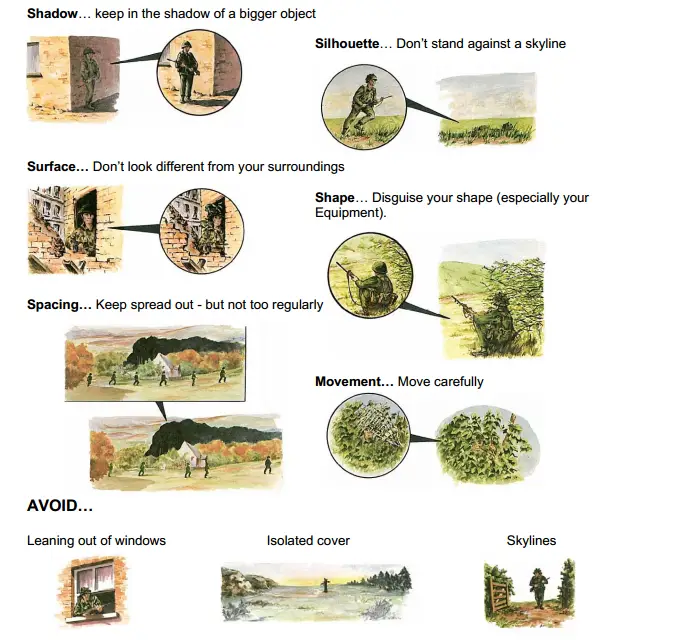
Buddy System
The buddy system is a procedure in which two individuals, ال “buddies”, operate together as a single unit so that they are able to monitor and help each other, e.g. when breaching.
Why we use the buddy system
- Buddies keep each other informed about key instructions and information.
- Promotes cooperative problem-solving.
- Decreases stress.
- Improves safety in combat.
- Promotes better leadership skills.
- Creates a more enjoyable environment for the player.
How to assign a buddy
- To assign a buddy, use the ace interaction key on a player (normally the windows key.
- اذهب الى “Team Management” and hover over “Assign Buddy” and ace the interaction key.
- A man icon will pop up in DUI – Squad interface on the player you assigned as your buddy.

Breaching
Door Breaching
When breaching a door let’s assume you are 2 man team:
- Your point man will position themselves at the door and will say “the first set”.
- The second will ideally position on the opposing side of the door (If not possible then stack behind the point man), once in position, they will say “the second set”.
- When everyone is ready the point man will say “breaching” and will open the door and clear the building with the second person following behind, the last person to enter has the responsibility of watching the rear.
Stair Breaching
When breaching stairs let’s assume you are a 2 man team:
- The point man will look up / look down the stairs and state “first set”.
- The second will come next to the first guy and state”second set”.
- Point man will say “breaching” and clear up/down stairs followed by the second, whilst watching their rear.
Reacting to Contact/Enemy Fire
If your element comes under fire, follow these basic guidelines:
Communicate
Make a contact report, report on any visible/audible enemies:
- 3د’ق: وصف, اتجاه, and Distance.
- Keep it short and simple, e.g. Ifrit to the North, approx. 200 م.
- Distances can be estimated, also use landmarks to indicate positions.
Take cover
- The counter fire should always take priority, try to continue firing at the contact as you move to cover. If cover is not available aim to create some e.g. Smoke grenades.
Return Fire
- The sheer volume of return fire you direct at the enemy may be the deciding factor of the firefight from a psychological standpoint.
Formulate Plan
- Leadership should quickly assess the situation and make a plan to neutralize or evade the enemy. If you are isolated from your IC’s then you may need to do this.
Basic Medical
Medical Equipment
This is the equipment you should always be carrying on you when in the field:
- Bandage (Elastic) ×10
- Bandage (QuickClot) ×10
- Bandage (Packing) x5
- Morphine x1
- Splint x2
- Tourniquet x4
Treating a Wound
Follow this process to treat wounds on yourself, and give yourself the best chance of survival:
- If on a limb immediately tourniquet that appendage, if on the chest or head use Elastic (if the medic is near) or QuickClot (if the medic is far).
- Tell your IC or 2IC that you have been injured.
- Aim to get stabilized by a medic as soon as possible, don’t leave the tourniquet on for more than 5 mins, and don’t use Morphine unless instructed by a medic.
Using TFAR
Radio Procedure
- In order to keep communication clear, keep any unnecessary chatter off the radios.
- Stay on the frequencies you are designated at the beginning of the operation.
- Keep all radio communications short and to the point.
- Think about what you are going to say before transmitting.
Radio Structure
- Infantry should only be on the short-range frequency for their section, whilst the IC & 2IC should also be on long-range with their Platoon Command.
- Platoon command communicates with the IC’s and 2IC’ق & Ground, this information is then relayed to High command.
- Use this وصلة to view the layout of this system
هذا كل ما نشاركه اليوم من أجل هذا Arma 3 مرشد. تم إنشاء هذا الدليل وكتابته في الأصل بواسطة Jpeg. في حالة فشلنا في تحديث هذا الدليل, يمكنك العثور على آخر تحديث باتباع هذا وصلة.
